What is an Oxygen Concentrator?
An oxygen concentrator is a medical device that supplies almost pure oxygen to those who require it.
Who needs an Oxygen Concentrator?
- COPD Patients: Patients suffering from Chronic Obstructive Pulmonary Disorder (COPD) are prone to the complications of this disease like pulmonary hypertension, hypoxemia, severe arrhythmias, and even heart failure. COPD patients are treated using oxygen therapy, wherein an oxygen concentrator comes in handy.
- Covid-19 Patients: Hypoxemia is a condition where the oxygen content in the blood is low, when SPO2 level is below 94. Such individuals are recommended the usage of an oxygen concentrator for their treatment.
- Patients suffering from dyspnea: Dyspnea is a condition of shortness of breath or troubled/labored breathing. Getting the right amount of oxygen into the bloodstream helps ease the complication as well as other consequent conditions such as dizziness or fatigue.
- Hypoxemic Patients: Hypoxemia is a condition where the oxygen content in the blood is severely low. Such individuals are recommended the usage of an oxygen concentrator for their treatment.
Benefits of using an Oxygen Concentrator
Along with its usage in the treatment of conditions like COPD, hypoxemia, pulmonary hypertension, dyspnea, etc it also has other benefits such as the ones given below-
- Using an oxygen concentrator helps improve quality of life. It helps in improving mood and in a better sleep. With the increased amount of oxygen in the blood, organs receive more oxygen which results in the elimination of dizziness, fatigue, symptoms of depression and overall, improving one’s well being.
- It also gives a better exercise tolerance. It increases endurance levels and in general, improves fitness and health.
- An oxygen concentrator is compact which makes it easier to use it both at home and while traveling.
- Unlike oxygen tanks which have a finite source of oxygen and needs refilling, an oxygen concentrator provides the patient with oxygen therapy for as long as required without refilling as it makes use of the surrounding air.
Features of an Oxygen Concentrator
Typically, an oxygen concentrator consists of a:-
- Cabinet– It houses the compressor and filters.
- Tubing– Surrounding air and purified air pass through this.
- A nasal cannula and/or the face mask– The purified, high oxygen content air is dispensed to the patient using this.
Portable units will additionally include an AC and/or DC charger, and a battery.
Types of Oxygen Concentrators
There are two types of oxygen concentrator:-
- Stationary or home oxygen concentrator– It does not require any oxygen tank refills to work. It simply makes use of the surrounding air, purifies it and provides the medical grade, concentrated oxygen.
- Portable oxygen concentrator– It works on the same principle as a stationary oxygen concentrator except that it can be carried around and it works on the battery which can be recharged.
Working of an Oxygen Concentrator
- The concentrator draws in room air and passes it through a series of filters that remove dust, bacteria, and other particulates.
- In the first step of the concentration process, a compressor forces air into one of the two cylinders containing sieve material, where nitrogen is adsorbed, leaving concentrated oxygen and a small percentage of other gases found in room air.
- Simultaneously, in the other cylinder, nitrogen is desorbed and exhausted into the atmosphere.
- In the second step, the function of the cylinders is reversed in a timed cycle, providing a continuous flow of oxygen to the patient.
The air we breathe in consists of 21% oxygen and 79% nitrogen along with small amounts of other gases. Once processed, the air delivered to the oxygen user is 90-95% pure oxygen.
Operation of an Oxygen Concentrator
- The oxygen concentrator is properly set up by an expert.
- The unit is plugged into a power source, turned on, and the oxygen flow is adjusted as prescribed by a doctor.
- A nasal cannula or mask is applied to the patient.
- The concentrator is used for the prescribed amount of time, typically continuously for days or weeks at a time.
- The only requirement is a stable power source.
Frequently Asked Questions
What is a pulse flow/dose and a continuous flow/dose?
Pulse and continuous flow refer to how the oxygen is delivered to the patient. A pulse flow machine delivers oxygen only when the patient inhales and is triggered by inhaling. A continuous flow machine delivers a continuous flow of oxygen. Most continuous flow machines will deliver both pulse and continuous flow.
Can a Portable Oxygen Concentrator (POC) be used when traveling internationally?
Yes, all of the portable oxygen concentrators have international power supplies which will accept 100v to 250v at 50 or 60 hertz. All that is needed is a proper plug adapter.
Can oxygen more than what is prescribed be used?
No, using more than prescribed oxygen is harmful as it can cause Oxygen toxicity/Oxygen poisoning in the body. It may have damaging effects like damage to eyes, acute respiratory distress syndrome (ARDS), alveolar damage, destruction of neurons, etc.
Can oxygen less than what is prescribed be used?
No, it is absolutely essential that one uses oxygen exactly as prescribed by the physician. Using less than prescribed oxygen can cause low levels of oxygen in the blood which may result in poor memory, irritable mood, poor cognition, shortness of breath, headaches and much more. Using less than prescribed oxygen for longer periods of time also deteriorates lung’s health and causes the disease to grow.
How much oxygen is ideal?
As prescribed by the physician. Ideally, a healthy individual has a saturation of oxygen in the blood at 95-99%. Oxygen levels in the blood after the prescription is measured using pulse oximeter and should be maintained at above 90% in most cases.
Which is the best brand of oxygen concentrator that one should buy?
While all brands are good, the most important thing to be checked is that it should carry some international approvals like FDA, CE & ISO. The second most important thing to be kept in mind is that the specifications should suit the person’s requirement. The parameters one can consider to compare different models of different brands can be flow rate, battery backup, alarms (especially low purity of Oxygen), weight, power consumption and portability.
Is an oxygen cylinder required at home if an oxygen concentrator is used instead?
It is recommended to have an oxygen cylinder as a backup source in case the concentrator fails.
Should a nasal cannula be used or a face mask?
Either is fine; although a nasal cannula is preferred by most patients. However, if a nasal cannula produces rashes in the nostrils and/or the flow requirement is more than 6L per minute (LPM), then a face mask is preferred.
DO’s and DONT’s for an oxygen concentrator
DOs
- DO change the filter yearly
- DO change the cannula at least once every month
- DO run your POC at least 4 hours each month
DON’Ts
- Do NOT get it wet
- Do NOT smoke around an oxygen concentrator
- Do NOT leave your oxygen concentrator in a small space
Where to buy an oxygen concentrator in Hyderabad?
Oxygen concentrators are available in Hyderabad in:
TrueCare Surgicals (Store 1)
Address: H.No 1-100, G2, Hitech City Main Road, Opposite Indian Oil Petrol Pump, Madhapur, Hyderabad, Telangana- 500081
TrueCare Surgicals (Store 2)
Address: Nizampet X Road, Near Sri Sri Holistic Hospital, Behind Vasi Reddy Swagruha Foods, Kukatpally, Hyderabad, Telangana- 500072
TrueCare Surgicals (Store 3)
Address: Near Nallagandla Bata Showroom, Beside Prestige Showroom, Opp side of Ratnadeep Supermarket, Nallagandla, Seri lingampally, Hyderabad.
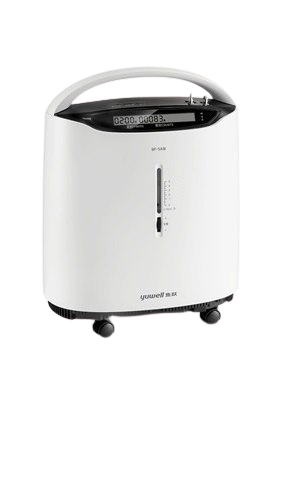
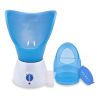
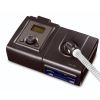






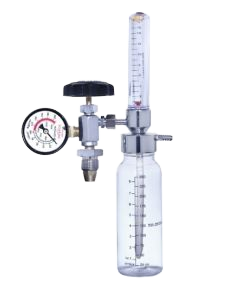
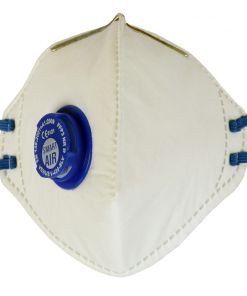
Venkat Rao –
Contacted for Oxygen box for home as situation is not good, given valuable information suggested few other shops. Happy with the communication.
Urmila –
I bought 2 oxygen concentrators from them during pandemic and they provided for lower than market price at that time, 20K less than what I got outside. Appreciate their genuineness and now I am ordering from them regularly.